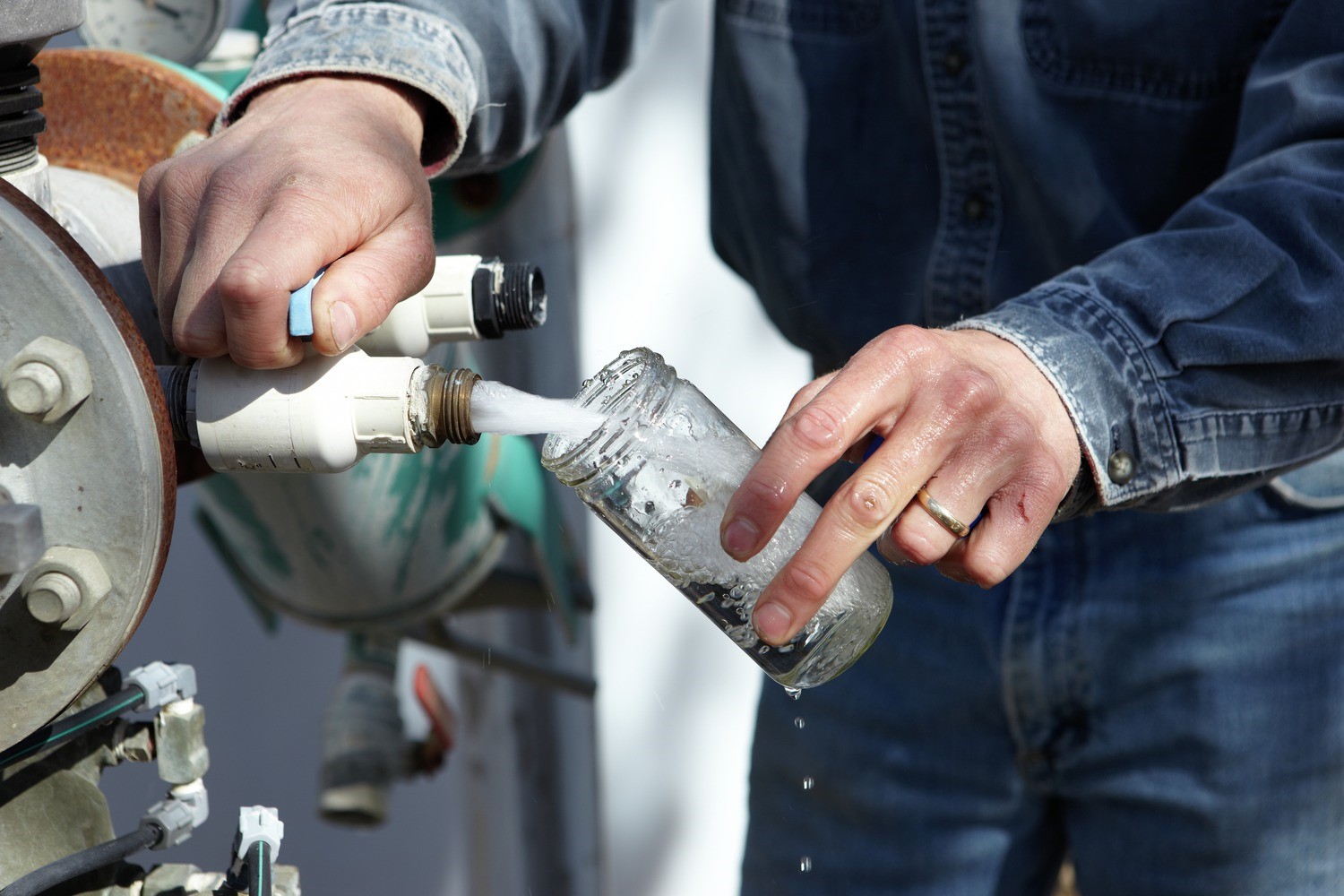This article was provided by Spencer Cooper, senior manager, Field Outreach and Education, Almond Board of California
Water is our number one applied input, so with the irrigation season right around the corner now is a good time to sample irrigation water for  laboratory analysis to see what that water contains. After all, while sampling is easy there are few steps that cannot be overlooked if accurate lab results are to be achieved.
laboratory analysis to see what that water contains. After all, while sampling is easy there are few steps that cannot be overlooked if accurate lab results are to be achieved.
In general, most ag laboratories will provide you with the appropriate water bottles to use in collecting and submitting your water samples – be sure to fill your bottle to the top. This is important because you want to make sure that the water sample is not cross-contaminated with residual liquid from a soda bottle or sports drink bottle, for instance. I always recommend pulling enough water for the lab to run the sample twice, just in case one becomes contaminated.
Where to sample
Where to sample When pulling the water sample, it is best to take it on the downstream side of your filter station after the system has been running for a few hours. This will help prevent filtered particulate from contaminating your sample. Allow three to five minutes of fresh water to run out of your sample port before collecting the water, as this will ensure that you don’t collect any residual particulate matter that may be in the port. Remember to try and keep the samples out of direct light and heat, as these factors may influence the sample quality.
It is important to get the water sample to the lab within 48 hours of sampling to ensure accurate lab results. I suggest asking for a full panel when you submit the sample. The analysis should consist of, at minimum, the following:
- pH
- electrical conductivity (EC)
- sodium adsorption ratio
- nitrate nitrogen
- calcium
- magnesium
- potassium
- sodium
- bicarbonate plus carbonate
- chloride ion
- boron
- dissolved solids
- sulfate
If you are noticing emitter plugging from bacterial slime, you may want to contact a water treatment company that can test and diagnose the cause of the emitter plugging.
Having these water sample results on record serves multiple purposes: Understanding your water chemistry is the first step in determining what it will take to properly maintain your irrigation system and how your water makeup can affect your crop health. A current water sample is also key in developing your yearly Nitrogen Management Plans as it helps you understand how much applied nitrogen, if any, will be coming from your water source.
Irrigation water and soil salinity
All irrigation water contains dissolved mineral salts, which will be revealed in your lab analysis. Once you go over your lab results with your PCA or agronomist, you can determine if in-season leaching is necessary. This discussion is important because over time salts can build up in the root zone and reduce orchard production, if not removed by leaching. Salt buildup poses two distinct hazards to almond orchards: the total salt content and the toxic effect of specific salts, such as sodium, chloride and boron. Visit Almonds.com/Irrigation and check out the “Almond Salinity Hazard and Leaching Requirements” guide for more information about leaching.
Excess total salinity creates an osmotic stress, which reduces crop growth by the concentration of dissolved salts in the crop’s root zone. The most common positively charged ions, or cations, are calcium, magnesium, and sodium, while the most common negatively charged particles, or anions, are chloride, sulfate, and bicarbonate.
To overcome this osmotic stress, plants must expend more energy to absorb water from the saline soil, leaving less energy for plant growth. The more saline the irrigation water, the faster salts build up in the soil, potentially reaching a level which reduces production.
In addition to the effect of salinity in the orchard, elements such as sodium (Na), chloride (Cl) and boron (B) can build up in the root zone and be taken up by the tree to a toxic level, burning the leaves and reducing photosynthesis. Because there are differences in tolerance to these elements among rootstocks and varieties, tissue analysis is the best indicator of the toxic element hazard. Boron and sodium can be leached — just as with total salts — but are more difficult to remove than the other salts.
An accurate analysis of your irrigation water gives you the opportunity to understand what kind of affect your water can have on your overall plant health and irrigation system. Accurate analysis depends on accurate data, which begins with consistent collection techniques. A helpful guide for evaluating the suitability of a water supply for irrigating nut crops, which was developed by UC Cooperative Extension farm advisor Allan Fulton, is available here.
Growers interested in learning more about water sampling as well as efficient irrigation practices should contact Spencer Cooper at scooper@almondboard.com or (209) 604-3727. Cooper also offers one-on-one field visits to review irrigation practices outlined in the Almond Irrigation Improvement Continuum, a comprehensive manual of best practices related in irrigation management and scheduling practices. For more information and to access a digital copy of the Continuum, visit the Almond Board of California’s website at Almonds.com/Irrigation.